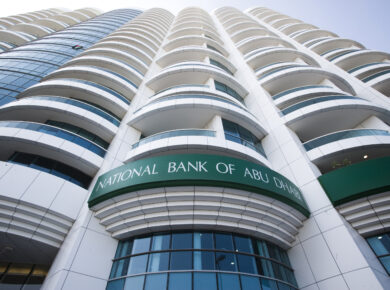Amidst interest rate hike, UAE dirham records historic high against Pakistani rupee.

On Thursday, the Pakistani rupee experienced a sharp decline, reaching an all-time low against the US dollar due to political and economic uncertainty caused by the delay in International Monetary Fund (IMF) funds. The rupee’s value dropped by 6.66% or 18.98, reaching 285.09 (77.68 against the dirham) in the interbank market, while it crossed the 290-barrier against the greenback (79.01 versus the dirham) for the first time and approached the 300-mark. The State Bank of Pakistan (SBP) data indicates that it closed at 266.11 against the greenback (72.50 versus the dirham) a day earlier.
Analysts and market experts considered the rupee’s depreciation as part of a market correction, as the IMF demanded that the significant gap in rates between the open and interbank market be eliminated. Investor sentiment was also affected by the economic uncertainty caused by the delay in IMF funds. They stated that the current rate is too high and should not have increased by that much, attributing the decline to the delay in the agreement with IMF and the significant gap between interbank and open market rates.
Zafar Paracha, Secretary General of the Exchange Companies Association of Pakistan, expressed concern over the decline and attributed it to the delay in the agreement with the IMF and the significant gap between interbank and open market rates. On Tuesday, Moody’s downgraded Pakistan’s local and foreign currency issue and senior unsecured debt ratings from Caa1 to Caa3.
The decline of the Pakistani rupee is a cause of concern for the country’s economy, as it increases the cost of imports and inflation, leading to a decrease in consumer purchasing power. Pakistan’s imports are higher than exports, and the decline in the rupee’s value would lead to a further increase in the trade deficit, adversely affecting the economy.
The IMF loan program is vital for Pakistan’s economic stability, as it provides financial assistance to stabilize the country’s foreign exchange reserves and balance of payments, which have been affected by the Covid-19 pandemic. Pakistan has received a total of $2.8 billion under the IMF program since it was approved in April 2020, and the country was expecting to receive the next tranche of $450 million in the current quarter.
However, the IMF’s recent demands for reforms have delayed the release of the next tranche of funds. The IMF has demanded that Pakistan address issues such as increasing electricity tariffs and taxation reform to improve the country’s fiscal deficit, which has worsened due to the pandemic. The delay in the agreement with the IMF and the subsequent decline of the Pakistani rupee have raised concerns about the country’s economic stability.
The Pakistani government has taken several measures to stabilize the economy, such as increasing taxes, reducing subsidies, and devaluing the rupee. However, these measures have not been sufficient to address the country’s economic challenges, and further reforms are required.
The decline of the Pakistani rupee is a cause for concern for the country’s economy, and the delay in IMF funds and demands for reforms have added to the economic uncertainty. The government needs to take urgent measures to address the economic challenges and improve the country’s fiscal deficit to ensure economic stability.






Qbrmgx
stromectol 2mg online – order candesartan 8mg generic cost carbamazepine 400mg
January 3, 2025Uqwaig
isotretinoin brand – accutane 40mg oral buy linezolid sale
January 16, 2025Cfsmuq
buy amoxicillin pill – ipratropium buy online ipratropium 100mcg ca
January 16, 2025Zgbjfa
buy cheap zithromax – zithromax order purchase nebivolol pill
January 29, 2025Avyxct
prednisolone 10mg price – buy progesterone for sale progesterone for sale
February 1, 2025Bbtwge
neurontin oral – clomipramine where to buy cheap itraconazole
February 8, 2025Yxccyf
order lasix 40mg online – oral betamethasone 20 gm3 buy betnovate 20gm for sale
February 9, 2025Wjnkpd
amoxiclav online order – brand cymbalta cymbalta brand
February 14, 2025Ecmaqx
order doxycycline sale – order ventolin 2mg pills glipizide pills
February 15, 2025Ylzfec
order rybelsus 14 mg pill – rybelsus 14 mg generic buy cyproheptadine 4 mg pills
February 24, 2025开设Binance账户
Your article helped me a lot, is there any more related content? Thanks!
February 26, 2025Anlouw
buy generic tizanidine for sale – how to get microzide without a prescription purchase hydrochlorothiazide sale
February 27, 2025Olywla
tadalafil 5mg pills – cialis buy online viagra pills 100mg
March 5, 2025Ympguo
sildenafil 50mg cost – cialis 20 mg price buy tadalafil 20mg
March 6, 2025Zvkzzq
lipitor 20mg brand – brand amlodipine 10mg purchase lisinopril online
March 14, 2025Afsnjk
cheap cenforce 100mg – cenforce 100mg generic buy metformin online
March 16, 2025Gwupag
buy prilosec sale – atenolol price order atenolol 50mg pill
March 20, 2025Malzxi
medrol without prescription – order triamcinolone 10mg without prescription aristocort 4mg uk
March 26, 2025Jvpswr
desloratadine 5mg sale – buy priligy 60mg without prescription buy priligy sale
March 28, 2025Pqxjde
buy misoprostol sale – cytotec generic buy generic diltiazem
March 30, 2025Gofxeu
acyclovir 800mg tablet – buy acyclovir medication buy rosuvastatin
April 5, 2025Dpnzgp
buy domperidone without a prescription – order tetracycline 250mg for sale order cyclobenzaprine 15mg generic
April 7, 2025Kmuucm
buy domperidone 10mg generic – buy domperidone online where to buy cyclobenzaprine without a prescription
April 15, 2025Cvxvzk
inderal cost – methotrexate 2.5mg us buy methotrexate pill
April 16, 2025Vnumgh
order warfarin 5mg online – buy generic coumadin online cost cozaar
April 19, 2025